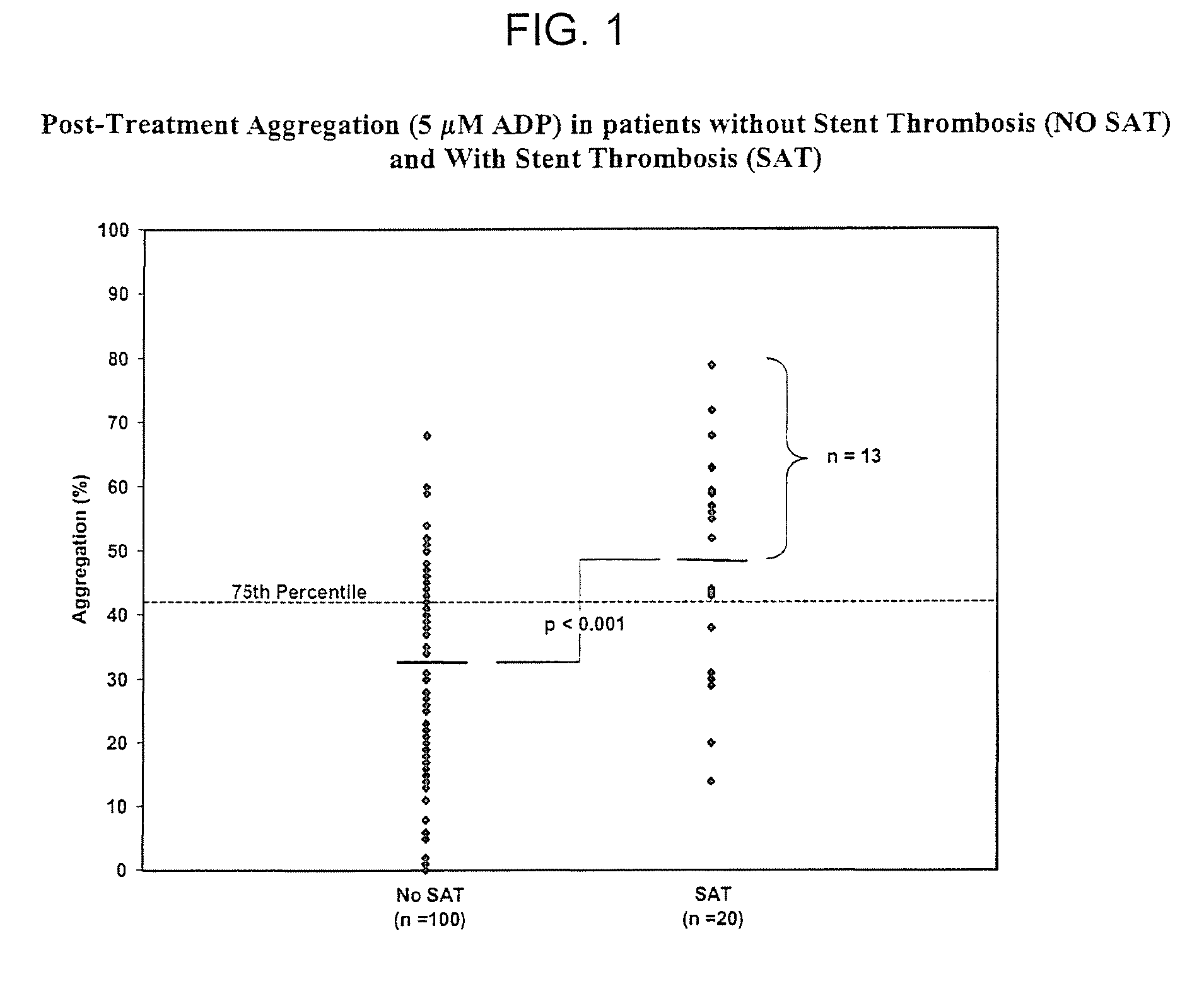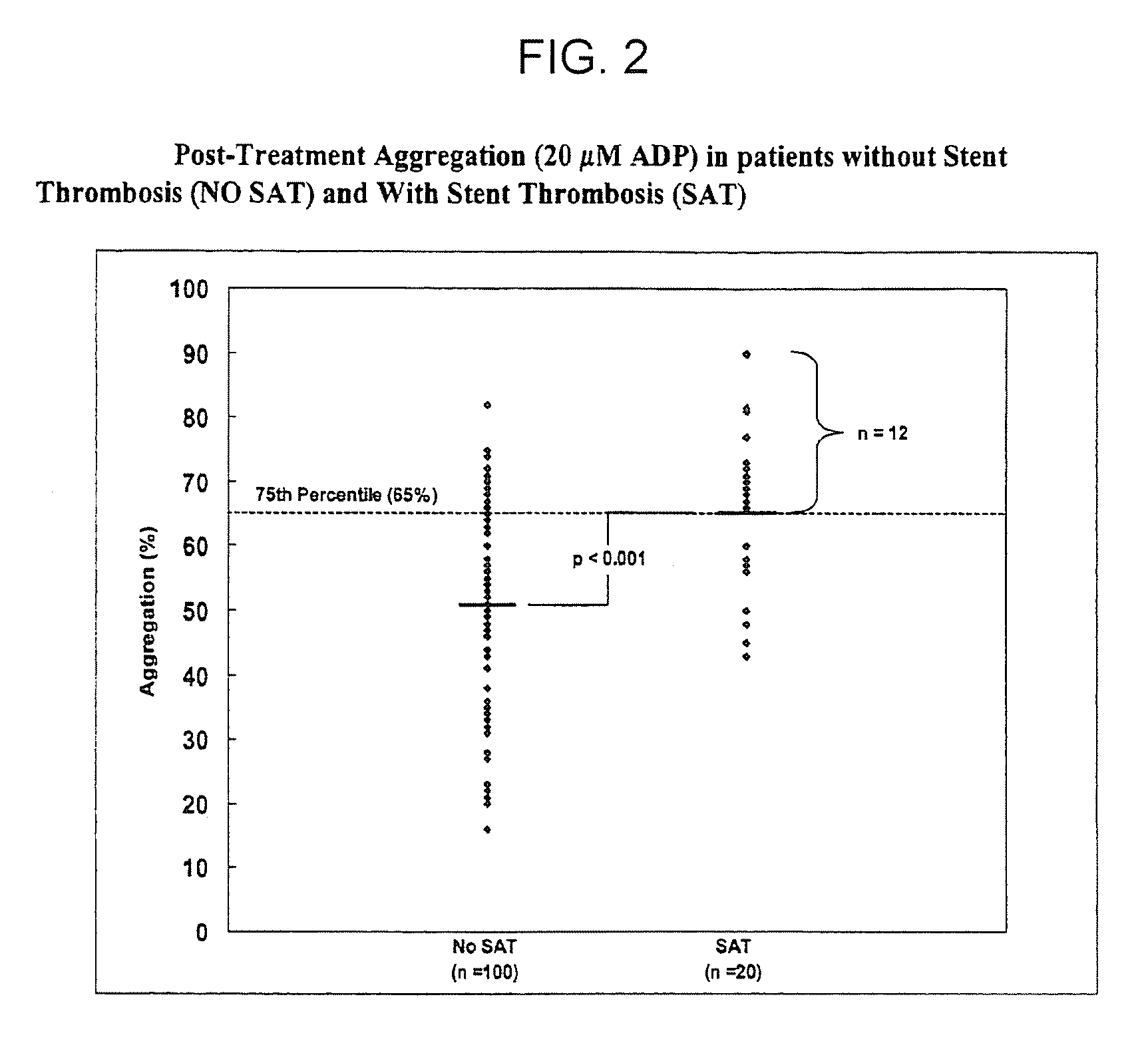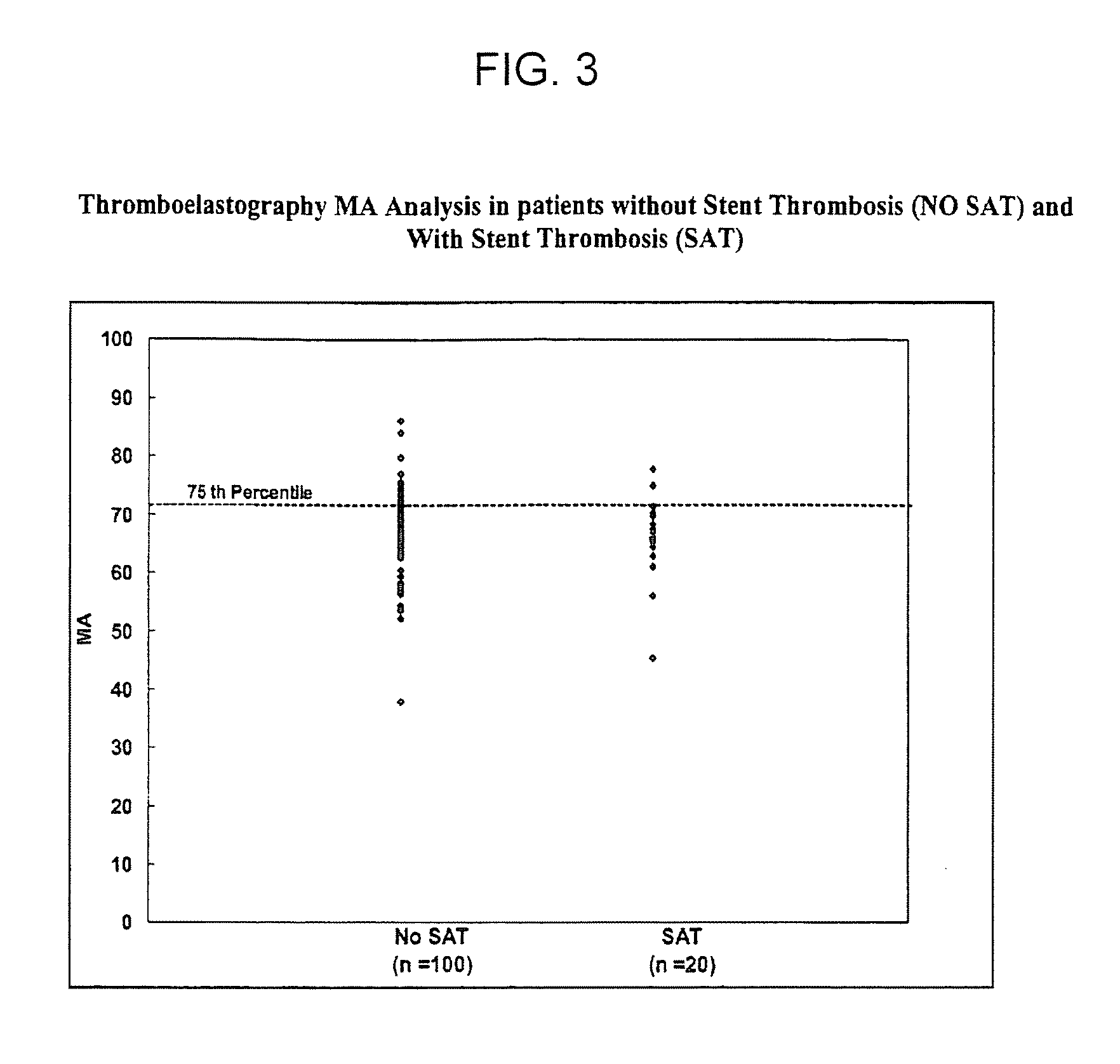Assessment of cardiac health and thrombotic risk in a patient
a thrombotic risk and cardiac health technology, applied in the direction of instruments, extracellular fluid disorders, peptide/protein ingredients, etc., can solve the problems of not being able to fully assess the immediate risk of developing myocardial ischemia, the method now used to assess the acute and the current method of assessing the risk of thrombosis or bleeding in patients is significant. , to achieve the effect of reducing the risk o
- Summary
- Abstract
- Description
- Claims
- Application Information
AI Technical Summary
Benefits of technology
Problems solved by technology
Method used
Image
Examples
example 1
Study of Platelet Reactivity in Patients with and without Stent Thrombosis: Clopidogrel Resistance and Stent Thrombosis (Crest)
Methods and Materials
[0173]Patients and Blood Samples. Cases of stent thrombosis (n=30) were identified by searching the medical records of patients who underwent coronary stenting in the last 1.5 years at the Sinai Hospital of Baltimore and Union Memorial Hospital, Baltimore, Md. This study was approved by the Investigational Review Board at the hospitals. Stent thrombosis was defined by the sudden onset of coronary artery occlusion in a stented vessel resulting in hospitalization and judged by the treating interventionalist as due to thrombosis. Platelet reactivity in patients with stent thrombosis (SAT) was compared to a group of patients without SAT. In patients without SAT, platelet studies were performed 5-14 days post-procedure and these patients were enrolled consecutively (n=100).
[0174]In patients with SAT, the average time from the occurrence of st...
example 2
Clopidogrel Loading with Eptifibatide to Arrest the Reactivity of Platelets
Methods
[0195]This study was approved by the Investigational Review Board. Consecutive patients undergoing elective coronary stenting were enrolled after giving informed consent. Patients were >18 years old. The exclusion criteria were: a history of bleeding diathesis, acute myocardial infarction within 48 hours, elevated cardiac markers (above upper limits normal for the respective assay), cerebrovascular event within 3 months, chronic vessel occlusion or angiographically visible thrombus, illicit drug or alcohol abuse, prothrombin time greater than 1.5 times control, platelet count3, hematocrit4.0 mg / dl, and thienopyridine or glycoprotein (GP) IIb / IIIa use prior to the procedure.
[0196]Patients were randomly assigned to one of four treatment regimens by a computer generated assignment that was chosen from a sealed envelope by the study personnel: Group A) clopidogrel (300 mg); Group B) clopidogrel (600 mg); G...
example 3
Platelet Reactivity and Clot Strength are Risk Factors for the Development of Ischemic Events within 6 Months
[0217]This example examines the association of platelet reactivity and rapid thrombin generation upon the incidence of long-term ischemic events following coronary stenting. The following methods and materials were used in this example.
[0218]Patients. This study was approved by the Investigational Review Board at Sinai Hospital of Baltimore. Consecutive patients undergoing non-emergent coronary stenting provided informed consent prior to the procedure. In order to be included in the study patients had to undergo successful percutaneous revascularization and be discharged from the hospital. Patients who gave informed consent but received coronary bypass surgery for revascularization were excluded. All patients were over 18 years old. Other exclusion criteria were: a history of bleeding diathesis, acute myocardial infarction within 48 hours, elevated cardiac markers (above uppe...
PUM
| Property | Measurement | Unit |
|---|---|---|
| risk threshold score | aaaaa | aaaaa |
| risk threshold score | aaaaa | aaaaa |
| risk threshold score | aaaaa | aaaaa |
Abstract
Description
Claims
Application Information
 Login to View More
Login to View More - R&D
- Intellectual Property
- Life Sciences
- Materials
- Tech Scout
- Unparalleled Data Quality
- Higher Quality Content
- 60% Fewer Hallucinations
Browse by: Latest US Patents, China's latest patents, Technical Efficacy Thesaurus, Application Domain, Technology Topic, Popular Technical Reports.
© 2025 PatSnap. All rights reserved.Legal|Privacy policy|Modern Slavery Act Transparency Statement|Sitemap|About US| Contact US: help@patsnap.com



